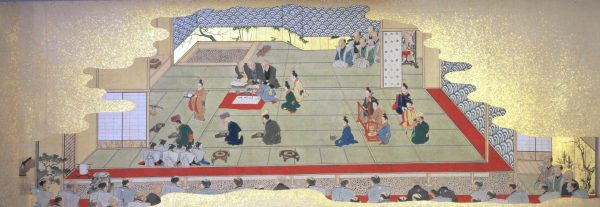As everywhere else, artists in Okinawa have also suffered from the pandemic, as venues were closed to the public for a few weeks. To support them, the Okinawa Prefecture Sanshin Makers Cooperative – the largest cooperative of traditional musical instruments craftspeople in Okinawa – has launched the hashtag #sanshinyuimaru. “Yuimaru” means “to help each other” in Okinawan language, and “sanshin” is the name of the most famous traditional instrument in Okinawa. The hashtag has many people around the world, from amateurs to seasoned professional, record a short snippet of their favourite song on the instrument from their home. It has gone viral since, and was even featured on TV and in the newspapers.
Okinawa's banjo
A symbol of Okinawan identity, the sanshin is ubiquitous in Okinawan folk music, and is used in many modern pop tunes on the island. Its shape reminds that of a banjo, with a long neck and drum-like body. The neck of the sanshin is carved out of a single piece of wood (ebony being traditionally the most valued) going all the way through a circular body. On that ring-shaped body are glued two python skins that amplify the vibrations of the 3 strings. The neck is not fretted – the musician has to press very precise spots to produce the right notes.
Photos courtesy of the Okinawa Prefecture Sanshin Makers Cooperative.
An instrument of diplomacy
The history of sanshin began in the 14th century, possibly when migrants from Fujian in China settled in the village of Kume (near the Prefectural Office). They are thought to have brought with them a lute, the sanxian, which was quickly reshaped and adopted by the Ryukyu Kingdom’s elite to accompany local songs: the sanshin was born. It became a staple of the education of young samurai (along with calligraphy, Chinese literature, etc…) as it was used for the welcoming of foreign dignitaries. From the 18th century on, royal luthiers and musical directors were appointed at the court. The music of the court is still widely played today to accompany kumi-odori, the court’s musical theatre, or dances in gorgeous traditional costumes.
 Photo courtesy of Okinawa Prefectural Museum and Art Museum
Photo courtesy of Okinawa Prefectural Museum and Art Museum
Songs of the people
Along the centuries the sanshin also made its way into the popular classes. Amateur craftsmen showed a lot of ingenuity in replacing the expensive python skin that only the nobility could afford: thick paper and resin first, then from the beginning of the 20th century empty food cans, giving rise to the kankara sanshin that became the symbol of Okinawan reconstruction after WW2. Ranging from ballads to machine-gun-fast dance songs, the songs of the commoners were traditionally very improvisational in nature, and are still adapted quite freely by modern musicians. The songs speak of the lives of ordinary people, with lyrics changing from one era to another up to nowadays.
The "pop" revival
Since the 1990’s, the instrument has also gained much attention nationwide thanks to modern pop artists such as BEGIN, Natsukawa Rimi, The Boom and so on. Sanshin classes are flourishing all over Japan, and abroad with groups promoting the instrument in the US, South America, UK, France … In 2018, the manufacture of sanshin has been added to the list of Japan’s “important traditional crafts”, and traditional techniques are preserved by the Okinawa Prefecture Sanshin Makers Cooperative. To hear the instrument played by some of the best artists in Okinawa, check their YouTube Channel. You can also easily try the instrument, as most sanshin shops offer free crash courses.
If you wish to purchase an instrument, please be advised that the trade of python skin is regulated by the Convention on International Trade in Endangered Species (CITES), and authentic python skins cannot be taken out of Japan. Artificial skins are frequently used abroad as an alternative, even by professional artists.

